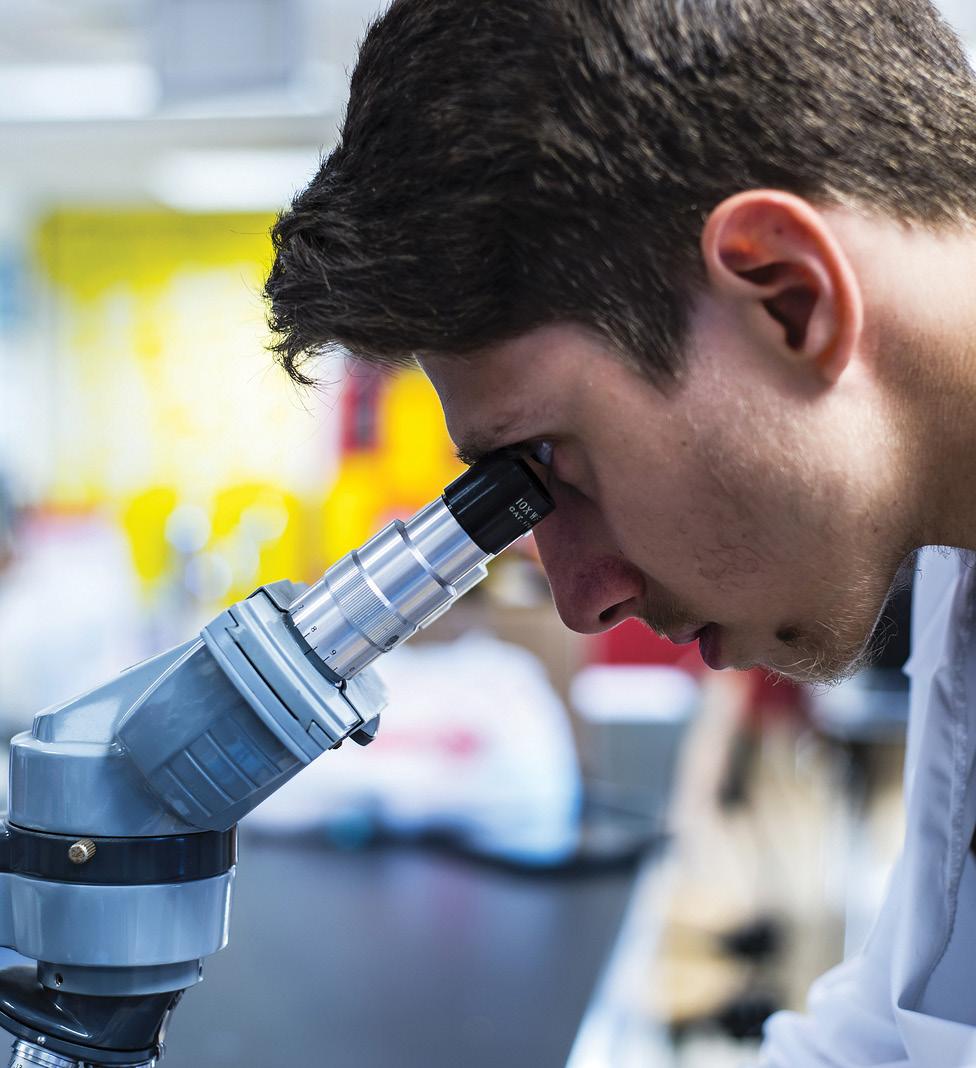
5 minute read
Executive Summary
from Global Leadership at a Crossroads: Are we Prepared for the Next Pandemic? SECOND EDITION
by Texas A&M School of Veterinary Medicine & Biomedical Sciences
In this report, the Scowcroft Institute for International Affairs at The Bush School of Government and Public Service at Texas A&M University outlines eight priority areas and their accompanying recommended action items to address vulnerabilities in the current pandemic preparedness and response system. Collectively, they represent issues the international community should address in order to establish pandemic preparedness and response capabilities.
A. IMPROVING CAPACITY FOR EARLY DETECTION AND RESPONSE 1. Best Practices in Management of Animal Diseases An estimated 75% of human disease pandemics start as disease outbreaks in animals that spillover into humans. Due to the highly complex and interconnected nature of disease spread, a One Health approach that links humans and animal disease surveillance is critical for early detection, response, and containment of outbreaks. A typical response to any report of disease is that the flocks and herds of diseased animals are ordered slaughtered or culled. Livestock producers and subsistence farmers, who are not able to access compensation when their animals are killed, are motivated to conceal diseased animals rather than report them. Despite its common use, however, culling can be challenging, especially in the austere environments of the developing world. To minimize these
Advertisement
challenges, we recommend that each country have written, practical compensation guidelines and that governments be held accountable by the international community. For countries not financially able, the World Organisation of Animal Health (OIE), the Food and Agriculture Organization of the United Nations (FAO), and the World Health Organization (WHO) should establish a culling compensation fund, and the international community should explore disease prevention and containment options other than culling, such as vaccination and treatment. 2. Ensuring Community-Level Awareness and Action In order to control outbreaks at the source, it is important that communities located within disease “hot spots”—or areas with ecological and demographic conditions likely to produce emerging diseases—have the training, education, and tools they need to identify a disease epidemic and take early response

measures. We recommend that international non-governmental organizations (NGO) and local universities serve as the main components for local capacity building. In making this recommendation, we recognize that there are inherent risks in this approach, which might include national government hostility toward NGOs and the often clientelist structure of local universities. B. LIMITING HUMAN AND ECONOMIC IMPACT 3. Increasing Continuity in Supply Chains Efficient and reliable transportation has changed the global economy and molded it into a system based heavily on the idea of comparative advantage. Countries around the world, including the United States, rely on “just-in-time” deliveries of goods, including vital medical supplies and equipment. This means that inventories are kept low and continual delivery of goods is required. A failure in the global supply chain during a pandemic could be deadly as it proved to be during the Ebola epidemic that occurred in West Africa. We recommend that the United States determine and document all the components of our most important supply chains (i.e., medical equipment, pharmaceuticals, food, etc.) in the event of a pandemic and consider different disease syndromes (e.g., respiratory vs. bloodborne). Developing this understanding is the first step toward adequately protecting our global supply chains.
4. Targeting Antimicrobial Resistance Antimicrobial resistance is quickly emerging as one of the greatest challenges in public health. The development of antibiotics has saved millions of lives and allowed for an explosion in livestock production and subsequent growth in
the human population, but the massive overuse of these medications has also created new, resistant strains of bacteria that threaten both humans and livestock. To counter antimicrobial resistance, we recommend investing in research and the development of new antimicrobials, creating a stronger regulatory system and clear guidelines for veterinary and farm use of antibiotics, decreasing the misuse and/or overuse of antimicrobials in human health, and understanding that fighting antimicrobial resistance requires a One Health approach. As part of that approach, we need to consider the environmental, animal, and human elements of disease emergence, transmission, prevention, and containment. C. MAINTAINING INTERNATIONAL LEADERSHIP CAPACITY 5. Strengthening Leadership and Coordination As we discussed in our 2017 white paper, “The Growing Threat of Pandemics: Enhancing Domestic and International Biosecurity,” leadership and coordination are critical to effective pandemic response. In this white paper, we encourage the development of a strategic direction for international leadership, the development of a communication strategy, and the United States maintaining its involvement in global health security and pandemic preparedness.
6. Maintaining United States Involvement in Pandemic Preparedness and Global Health Security Building on the recommendations in section five of this document, we focus on the importance of the United States maintaining involvement in international health security and pandemic

preparedness. We recommend that domestic experts frame the problem of pandemics to encourage a national defense perspective and for the United States to increase its international response capacity. 7. Ensuring the Private Sector is Fully Involved The financial cost of international health security and pandemic preparedness is significant and current needs are not being met. In order to strengthen international ability to respond to disease outbreaks, governments should encourage and incentivize the participation of the private sector. To help increase private sector involvement, we recommend greater economic investment and incentive policies from governments for research, development, and production of vaccines, therapeutics, diagnostics, and non-pharmaceutical interventions. Lastly, we recommend that the private sector become
formal participants in discussions and planning for pandemic preparedness and response. D. PROVIDING ADEQUATE FINANCING 8. Continued Funding for Disease Detection and Prevention Programs Our final topic area for this white paper is the importance of programs designed to detect and prevent disease outbreaks from becoming epidemics and pandemics. These types of programs include those funded by the United States Agency for International Development Executive Summary
(USAID), the Department of Defense (DOD), and the Centers for Disease Control and Prevention (CDC). Our recommendation in this area is simple: The United States should continue to support international disease detection and prevention and give priority to innovative and advanced research programs that employ a One Health approach in order to prevent animalto-human spillover events. These are critical investments for international health security and pandemic preparedness.











